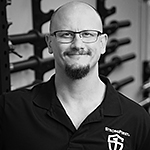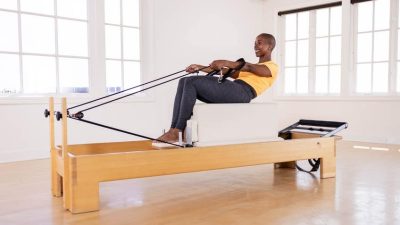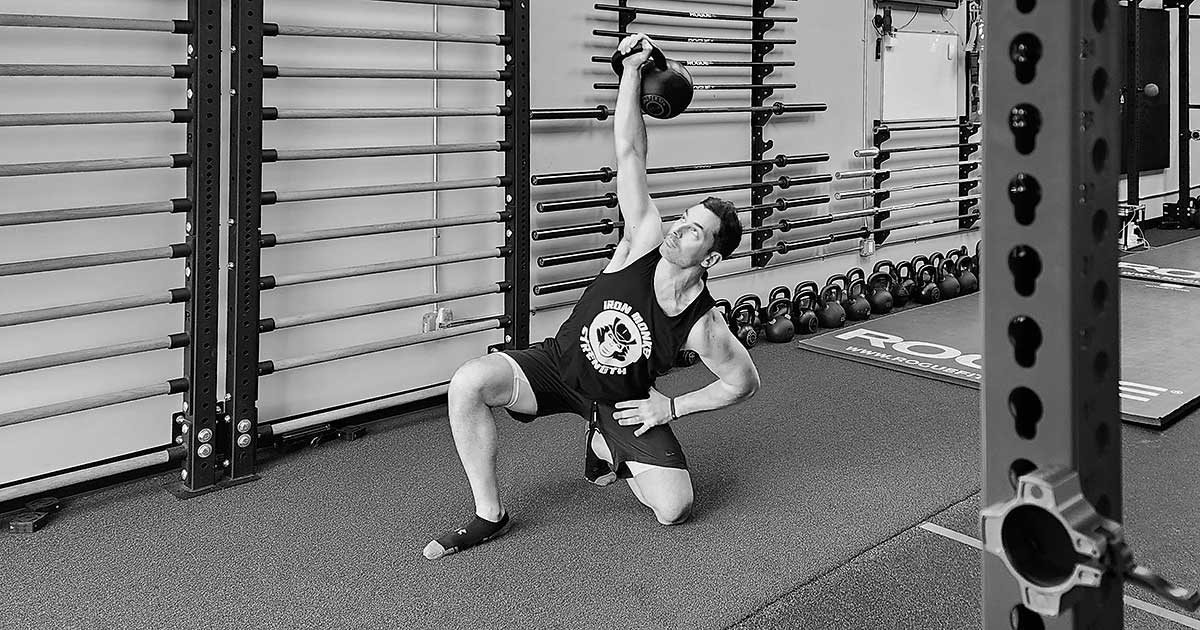
Many years ago, StrongFirst Certified Master Instructor Jon Engum published an article using his Deep Six practice that tested an instructor candidate’s readiness to pass the SFG Level I Certification.
The plan is simple: 3-5 rounds of a complex composed of the six fundamental kettlebell skills: swing, snatch, clean, military press, squat, and get-up. The training must be performed with an SFG snatch test kettlebell (without putting it down): five swings, five snatches, five clean and presses (long cycle), five squats, one get-up from the top down (also known as the get-down), then back up. From there, transfer the kettlebell to the opposite side and repeat. It is grueling, effective, and fun. I loved it.
Later he wrote a follow-up article, “A Group Lesson Plan for Conquering the Deep Six,” that adapted the Deep Six for group training. Here Jon outlined a great progression for running the Deep Six in a single group practice. As I read it, my gears started turning, and I immediately began experimenting with turning his single group practice into a six-week periodized training program. What followed was a few years of tinkering and experimenting with myself and many students. The result of this experimentation is the following program.
The program progresses in a linear step cycle. The weight and reps stay the same, the only thing that changes are the density and the volume. The purpose of the progression is to give the student time to adjust from the stress of a single exercise to completing all six kettlebell skills in the complex.
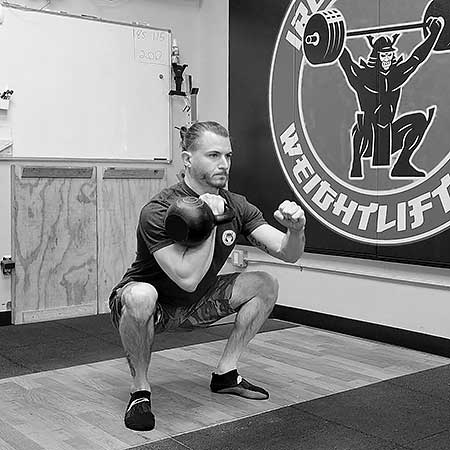
The recommendation for our students is to use a kettlebell they can press for at least six to eight reps. If the student has any faults in their technique, it will determine the weight they use for this program. The cleans or snatches are usually what gets the beginner students. Week one is simply working through the lifts individually. By the first or second training day, we know whether the student can handle the kettlebell they’ve chosen. If they can’t, then we simply go down a half or full kettlebell size, depending on what seems best.
The Program
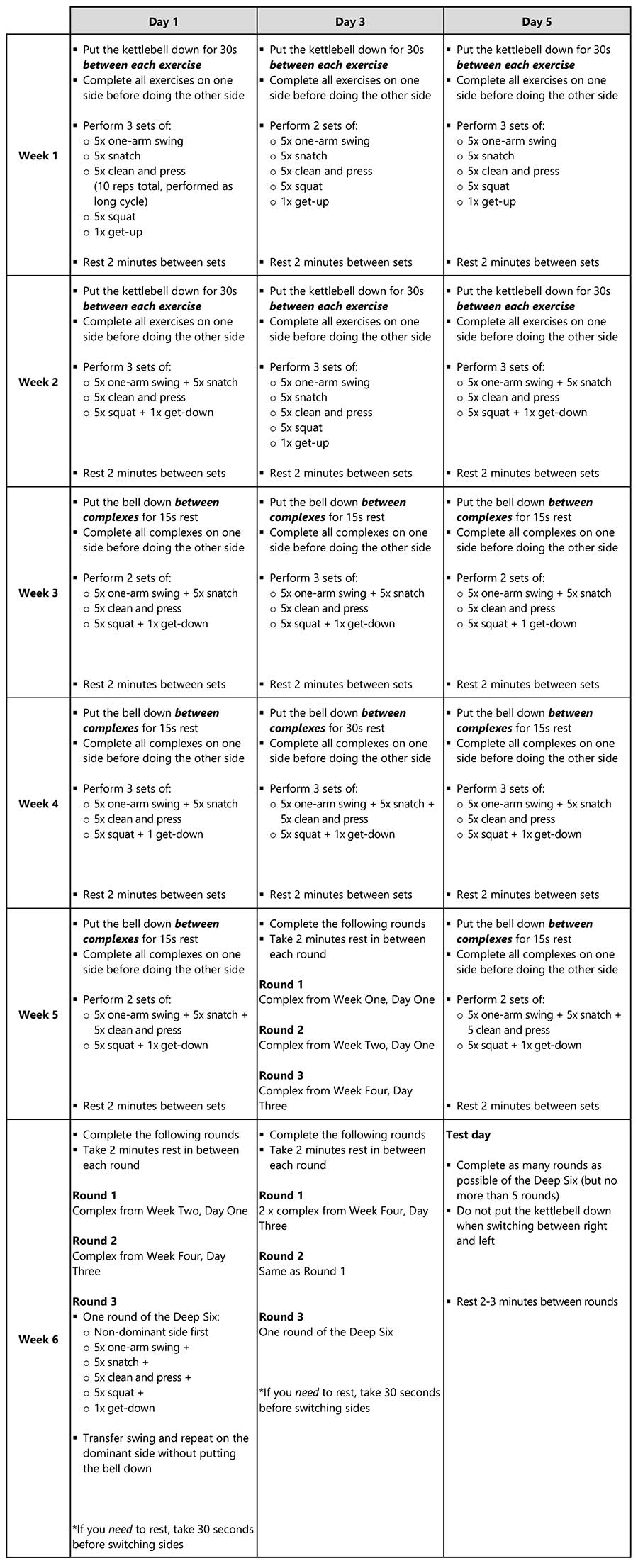
Programming note: I chose to program two to three rounds because unlike Jon’s original plan, this one must take into account the total stress the student will be under for the whole training cycle. It’s wise to keep in mind the cumulative effect this program will have. My experience is that most students have a hard time even with a reasonable sized kettlebell and solid technique. You may also notice that some days appear to back off from the linear escalation of density. This is intentional as it creates a waviness of load and stress. Intentionally putting in a valley helps the central nervous system (CNS) to recover and adapt.
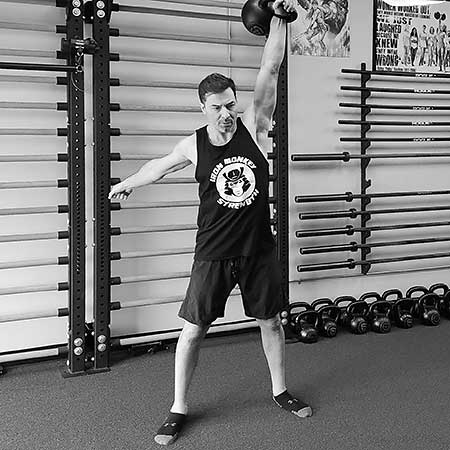
The Progression: Where to go from here?—The Iron Monkey Deep Six Challenge
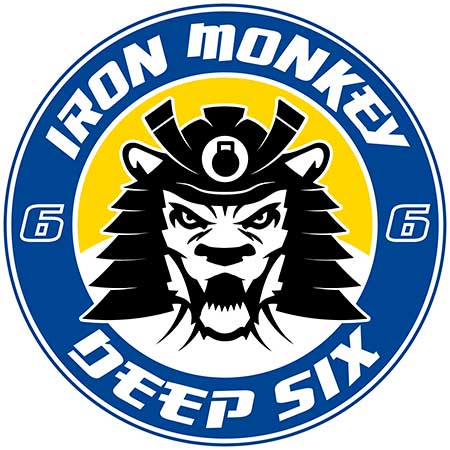
At Iron Monkey Strength, we have the Iron Monkey Deep Six Challenge. A student must complete all six weeks of the program with a kettlebell below their snatch size to earn their Green Level Two Pin. Then if they complete the Deep Six with a snatch size kettlebell or larger for three or more rounds, they earn the Iron Monkey Deep Six Pin. When they complete three or more rounds with a kettlebell two sizes up from their snatch size (for most men this is a 32kg and for most women a 24kg), they earn a plaque with their picture and name placed on our Wall of Strength.
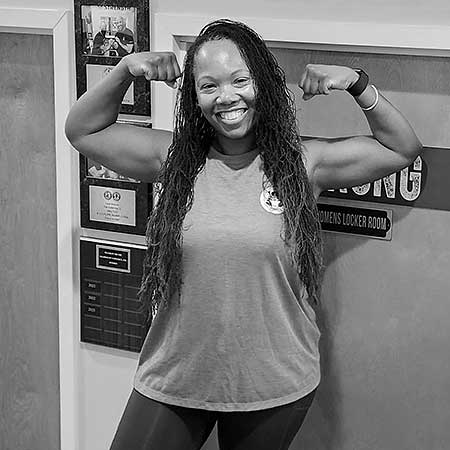
A Training Program for the SFG I
If you read Jon’s article, you will recall that his original intention was to test a student’s readiness for the StrongFirst Level I Kettlebell Certification (SFG I). It’s a solid program and I’ve found it to be an accurate test. I’ve coached five people for the SFG I using this program. Here’s what I’ve found: If the student completed the Deep Six with a snatch size kettlebell or larger, they passed the certification. If they could only complete the Deep Six with a kettlebell lighter than their snatch size, they did not pass the snatch test. However, all but one was able to submit a video and pass the certification within ninety days. This program can be used in two ways: to train and pass the SFG I and/or as a litmus test for whether you’re even ready to sign-up.
Whatever you choose…
Power to you!
